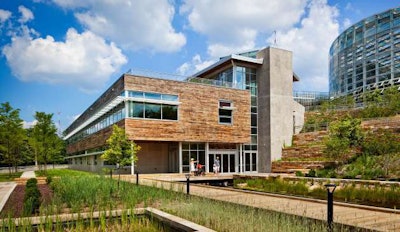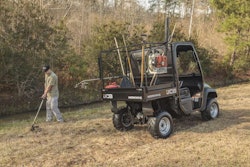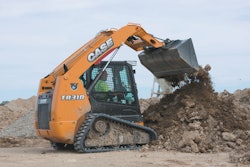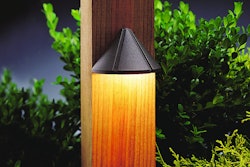
Phipps Conservatory and Botanical Gardens has become the first institution worldwide to achieve WELL Platinum Pilot Certification.
This is the highest rating awarded by the International WELL Building Institute.
The conservatory and botanical gardens received the certification for its Center for Sustainable Landscapes.
Designed and built by Pittsburghers and Pennsylvanians, this facility is also expected to be the first project to meet the Living Building Challenge — for which Net Zero Energy Certification was attained from the International Living Future Institute in May 2014 — in tandem with LEED Platinum and Four-Stars Sustainable Sites Initiative certification for landscapes, both of which were earned in 2013.
Project features that helped Phipps achieve its WELL Platinum Pilot rating for the CSL include:
- Air Quality Standards: Indoor air quality testing was conducted, confirming that the building is providing occupants with high quality air. The design met stringent thresholds for low levels of volatile substances, particulate matter and inorganic gases.
- Water Quality Standards: IWBI verified that the project is delivering healthy and safe drinking water. Source water was tested for harmful impurities and contaminants and to ensure compliance with the Environmental Protection Agency’s Drinking Water Standards.
- Humidity Control: Relative humidity levels are being monitored and devices are in place to maintain healthy humidity levels, which facilitates increased occupant comfort and higher indoor air quality, as well as prevents harmful biological growth.
- Sun and Glare Control: Internal and external solar shading has been installed to reduce heat penetration by sunlight and to control visual acuity, protecting occupants from uncomfortable thermal fluctuations and glare.
- Activity Based Lighting: To reduce eyestrain, lighting has been designed to reach balanced and proper illumination levels while task lights have been implemented to allow adequate levels of light.
- Wellness Literacy: To encourage the behaviors necessary for a healthy lifestyle, occupants have access to the latest health and wellness literature, as well as comprehensive guides that describe the various wellness features throughout the building.
- Healthy Ingredients: Drinks and foods distributed do not contain trans fats or high levels of refined ingredients as increased access to healthy foods encourages occupants to develop wholesome eating habits and maintain a healthy weight.
- Ergonomics: Comprehensive ergonomic solutions, such as sit/stand desks and ergonomically designed workstation chairs, have been introduced to help prevent stress and bodily injury.
- Circadian Lighting: Occupants have exposure to daylight in their workspaces, as well as access to indoor and outdoor gardens that provide natural light throughout the year. These spaces supply light intensity to reinforce the natural patterns of the human circadian rhythm — the biological system that controls sleep and wake cycles — which enhances occupant productivity and energy.
- Non-Toxic Materials: In accordance with WELL and the Living Building Challenge, Phipps banned the use of more than a dozen chemicals and materials in furniture and finishes that have been proven to be harmful to human health.
- Cleaning Protocol: A specialized, chemical-free cleaning plan has been put into effect to reduce bioloads, pests, allergens and odors that affect both indoor air quality and occupant comfort.










